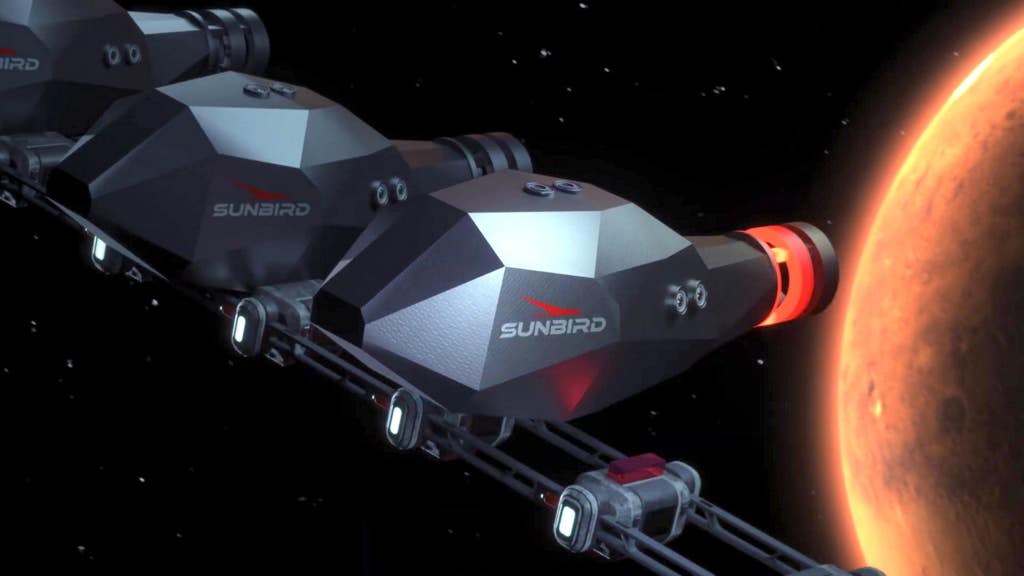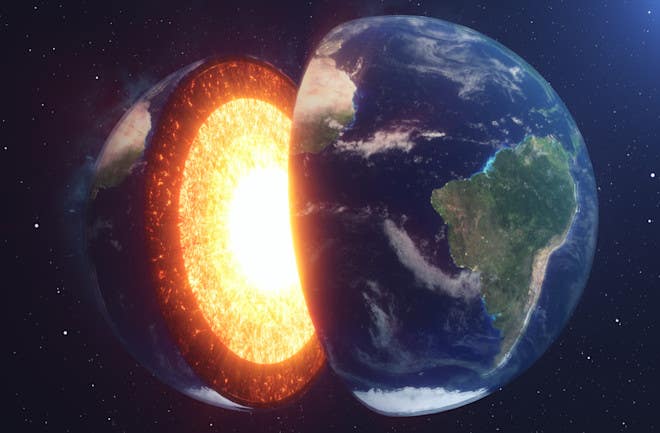New fusion-powered rocket could get us to Mars in half the time
Pulsar Fusion’s Sunbird fusion rocket may cut Mars travel time in half with tests planned in 2025 and a launch goal of 2027.

Concept visualisation showing how the Sunbird fusion-powered propulsion system would attach to large space vehicles and tow them vast distances. (CREDIT: Pulsar Fusion)
A U.K. space tech company has revealed a secret project that could change how humans travel between planets. After ten years of quiet research, Pulsar Fusion has unveiled a nuclear fusion-powered rocket called the Sunbird. This spacecraft isn’t just another science fiction concept—it’s being designed to fly by 2027, with tests already planned this year.
The company shared the news at the Space-Comm Expo in London, showing off a concept video and new design details. Pulsar Fusion believes the Sunbird can slash the time it takes to reach Mars by half and carry spacecraft across vast distances using a unique docking and towing system.
What Makes Sunbird Different
Unlike rockets that launch from Earth, the Sunbird is built to live in orbit. It sits in giant docking stations in space, waiting to be called upon like an interplanetary tugboat. When ready, it attaches to other spacecraft and propels them toward their destinations using a nuclear fusion engine.
That engine—the Duel Direct Fusion Drive, or DDFD—is what sets Sunbird apart. It uses nuclear fusion, the same energy process that powers the Sun, to produce incredible exhaust speeds. These speeds are key to reducing travel times between planets. For example, NASA’s New Horizons spacecraft took 9.5 years to reach Pluto. Pulsar Fusion says its system could do the same trip in about 4 years.
“If we are going to be the species that actually get to other planets, then exhaust speeds are pretty much the most important thing,” said Pulsar Fusion CEO Richard Dinan during the expo. “In terms of what can be theoretically produced in exhaust speeds, fusion is king.”
Fusion-powered rockets aren’t meant to launch from the ground. They’re too powerful and too dangerous for that. But in space, they can change the game. Once a spacecraft is in low-Earth orbit, a Sunbird can grab it and sling it toward Mars, the Moon, or even further.
How Fusion Works in Space
Fusion is a long-standing goal for scientists on Earth. The process fuses atomic nuclei together, releasing huge amounts of energy with very little waste. It’s hard to pull off, especially on Earth, where reactors must create intense heat and pressure to make it happen.
Related Stories
But the rules change in space. The vacuum of space acts like a built-in reactor chamber. Temperatures can hit absolute zero, and there’s no air to mess with the reaction. Fusion in orbit doesn’t need to run constantly either. Pulsar’s rocket engine burns for short bursts—just enough to generate thrust and move a payload.
The DDFD engine uses a fuel mix of deuterium and helium-3. This is different from the deuterium-tritium mix used in Earth-based fusion experiments. Helium-3 is rare and expensive, but it offers a unique advantage: instead of producing a stream of neutrons, this reaction creates charged protons. These protons can be used directly to generate propulsion.
The Sunbird’s fusion engine is a linear system, not the doughnut-shaped “tokamak” reactors seen in fusion power plants. It doesn’t have to confine plasma in a loop. That means the whole system can be lighter, smaller, and potentially easier to build and test in orbit.
“There’s a lower bar for fusion in space,” Dinan said. “This is in every way achievable. If we can do fusion on Earth, we can definitely do fusion in space.”
Still, not everyone is convinced. Paulo Lozano, an astronautics professor at MIT who specializes in rocket propulsion, expressed doubt. “Fusion is tricky and has been tricky for many reasons and for a long time, especially in compact devices,” said Lozano. Without seeing the actual engine design, he said, “I have no technical basis to judge.”
Testing the Limits
Sunbird is far more than a drawing on paper. Pulsar Fusion has already built two large vacuum chambers—the biggest in the U.K.—to test the rocket’s systems this year. These static tests won’t use real helium-3. Instead, the team will use inert gases to simulate how the engine might behave. If all goes well, they’ll begin in-orbit demonstrations in 2027.
“We have recently commissioned not one, but two of the largest space propulsion testing chambers in the U.K., if not all of Europe,” Dinan said. “Pulsar is now an international space propulsion testing powerhouse, and we have ambitious plans to expand rapidly.”
There is no official date for building the first full-scale Sunbird, but Pulsar Fusion is preparing to raise the money it will need. Dinan called the project “too speculative” to set a clear timeline.
If Pulsar can build the Sunbird, the rewards could be huge. Each spacecraft could cost around $90 million, mostly because helium-3 is so expensive. But the savings in time, fuel, and mission complexity could far outweigh the price tag. “If I can get them there quicker, they will pay for it,” Dinan said.
Eventually, the company hopes to mine helium-3 from the Moon, where it is more common in surface dust. That would make the fuel cheaper and the system more sustainable. For now, that idea remains in the future.
A Reusable Space Vehicle
The Sunbird is more than a rocket—it’s a reusable space vehicle. Once docked in orbit, it can be refueled and recharged for multiple missions. That’s different from most spacecraft today, which are either discarded after use or burn up during reentry.
Sunbirds are designed to be tough. Each one will be about 100 feet long, with thick armor plating to survive radiation and micrometeorites. This rugged design gives the craft its “alien-like” look, according to the company.
These spacecraft could not only tow other vehicles but also power their systems during flight. That’s not their main job, but it adds another layer of usefulness. The idea is to make space travel cheaper, faster, and more sustainable over time.
Next Steps
Pulsar Fusion says it wants the U.K. to be a leader in advanced space propulsion. With its past work on plasma thrusters and nuclear fission engines, and now its Sunbird project, the company is earning a reputation for turning big ideas into real tech.
“I expect that, as of today, Sunbird is already being closely analysed by our global competitors,” Dinan said. “We actively welcome visits from appropriate partners and prospective international clients and look forward to sharing more exciting developments we have in the pipeline.”
While space propulsion has often overpromised and underdelivered, multiple projects from different countries—including one from NASA and DARPA—plan to test fusion or fission engines by 2027. If just one succeeds, the next decade of spaceflight could look very different.
Fusion rockets may not yet be real, but the race to build them has officially begun. And Pulsar Fusion, with its bold Sunbird vision, is leading the charge.
Note: The article above provided above by The Brighter Side of News.
Like these kind of feel good stories? Get The Brighter Side of News' newsletter.
Joshua Shavit
Science & Technology Writer | AI and Robotics Reporter
Joshua Shavit is a Los Angeles-based science and technology writer with a passion for exploring the breakthroughs shaping the future. As a contributor to The Brighter Side of News, he focuses on positive and transformative advancements in AI, technology, physics, engineering, robotics and space science. Joshua is currently working towards a Bachelor of Science in Business Administration at the University of California, Berkeley. He combines his academic background with a talent for storytelling, making complex scientific discoveries engaging and accessible. His work highlights the innovators behind the ideas, bringing readers closer to the people driving progress.



